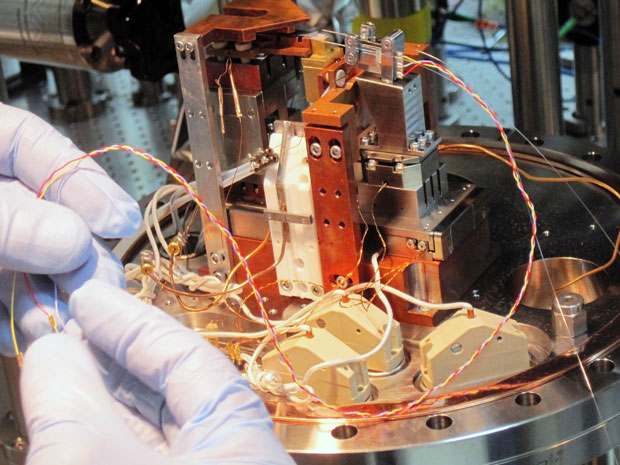
Photo: Weizmann Institute of Science
A scheme that uses a single atom to switch the direction of a single photon could pave the way toward quantum computers much more powerful than today’s machines.
The setup is described this week in the online issue of Science by researchers from the Weizmann Institute of Science in Rehovot, Israel. In simple terms, the atom can be in one of two states, either “left” or “right.” If the atom is in the left state, a photon that strikes it from the left will continue on in the same direction, as if it hadn’t hit the atom at all. A photon coming from the right, however, will be reflected back in the direction it came from, and at the same time the interaction will cause the atom to flip from left to right. Left and right can stand in for the 1s and 0s of digital logic.
Barak Dayan, head of the Weizmann Quantum Optics group, says the basic principle at work is interference. In one direction the photon does not interact with the atom and so continues in the same direction. But in the other direction, there is destructive interference between the incoming photon and the outgoing emission from the atom in the direction of travel, so the only direction the light can travel in is back from whence it came. Each such reflection toggles the state of the atom.
One type of quantum computer under development uses the electrical states of ions as the bits, or rather qubits, that make up their logic. The difficulty, Dayan says, is that to communicate the state of one atom to another, the atoms either have to be maneuvered to be next to each other or the state has to be transferred from ion to ion one at a time to its final destination, in an atomic version of “Post Office.” Using light instead, he says, means any qubit can share its information with any other, regardless of how far apart they are, thus simplifying the system.
The group’s next step will be to impose on the photons quantum information such as superposition, essentially getting them to be both right and left at the same time. It’s that ability to hold multiple states at once, instead of just 1 or 0, that promises to make quantum computers much more powerful than digital computers. Dayan hopes his group can achieve that goal in a few months.
